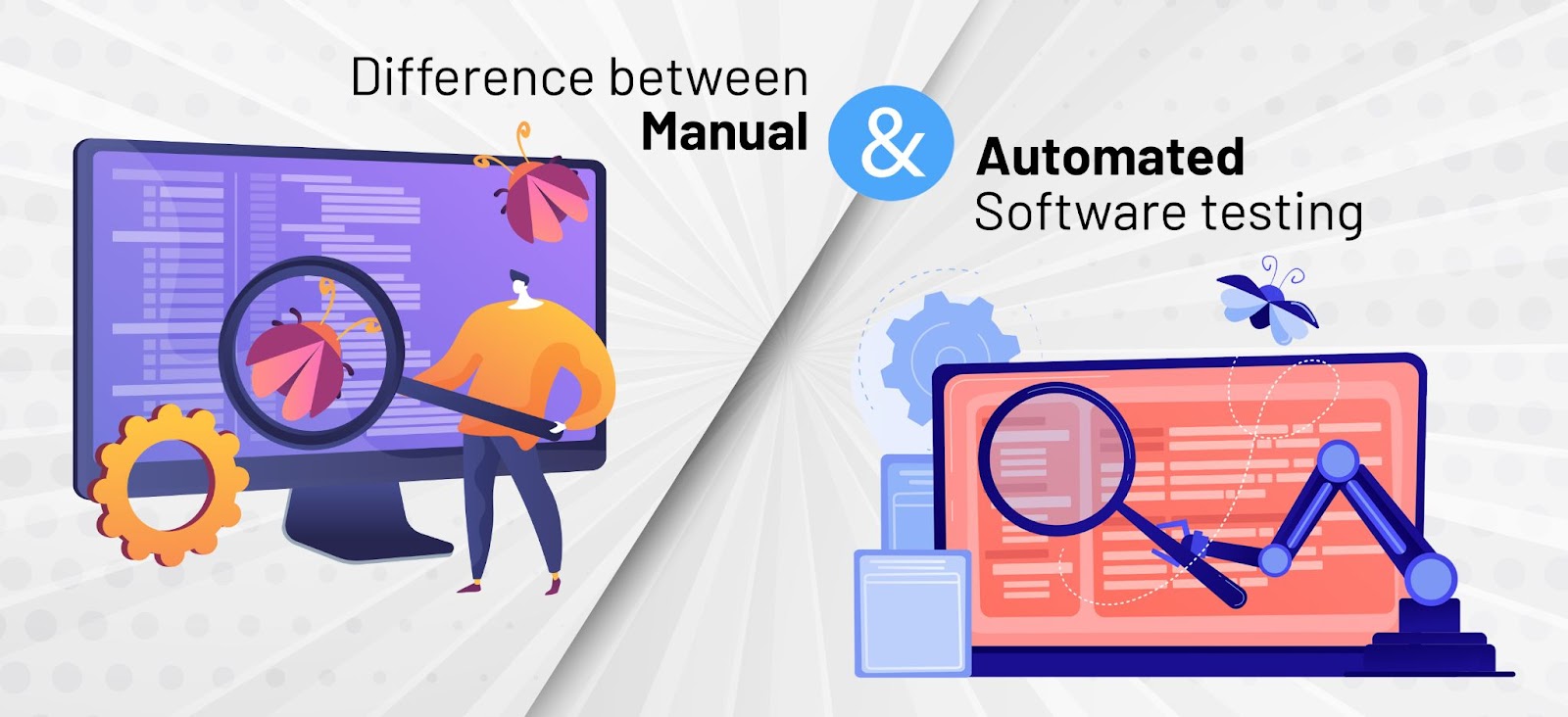Difference between Manual & Automated Software testing

What is Software Testing?
Software testing enhances the system’s overall quality and functionality. It helps to lower faults in a system, allowing it to become more efficient and user-friendly. Testing determines the system’s total standards & reliability. It can be done by the technical and non-technical teams as long as they have a fundamental understanding of the subject.
In short, Software testing is the method of reviewing a system to see if it fits the set requirements.
Software Testing can be performed by both Manual and Automatic. Many firms nowadays outsource software testing services so that specialists may get their hands on it and establish a more efficient procedure for manual and automated software testing.
What is Manual Software Testing?
Human testers examine the quality of a new application without automated technologies or scripts in manual software testing. The goal is to find bugs or flaws, guarantee that the product is flawless, and confirm that it meets the system requirement. The tester evaluates the essential aspects of a software program through manual testing.
Large-scale engineering operations depend on manual software testing and adhere to a more stringent process to find as many problems as possible. To guarantee that the testing is effective, the tester usually follows a predefined test plan that guides them through a collection of essential test cases.
What is Automated Software Testing?
Automated Testing entails the absence of any manual assistance. As a consequence, automated software testing is a technical process that does not focus on manual intervention. The goal is to decrease human effort and smooth out the system. A test automation structure is a well-organized plan that outlines the automation rules for a product. Test automation improves the outcomes of a standardized testing process by automating time-consuming but necessary processes. Automation engineers may require robust support for scripting languages, interaction with continuous integration systems, and the ability to expand testing quickly. Mainly Tools made available by third parties Scripts are used to do software testing to increase its correctness.
Let’s go over the advantages and disadvantages of Manual and Automated Software testing.
Advantages of Manual Software Testing:
- We can quickly make changes in the test case based on the project’s progress in Manual Testing.
- It can deviate from the original plan during a test run to investigate something that was not previously explored.
- It is simple to learn for new testers who have recently entered the field.
- Both large and small projects can benefit from manual software testing.
- Although trainers are obliged to provide expertise on automation, any tester can perform manual testing.
Disadvantages of Manual Software Testing:
- There is a considerable risk of mistakes and blunders in Manual testing.
- Manual testing is not appropriate for big businesses or projects with strict deadlines.
- Manual testing makes it tough to compare large volumes of information.
- Humans are more likely to make mistakes during manual testing.
Advantages of Automated Software Testing:
- An Automated test tool can run a single test or a series of tests faster than a manual tester.
- Automated Software Testing enables tests to act quickly enough to produce reliable findings in short sprints, meeting the needs of software projects for immediate, thorough, and perfect assessment.
- Automation executes a program flawlessly each time and captures outcomes in precise detail.
- It allows you to deal with many inputs, which is impossible to do with manual software testing.
- A human tester’s time and capacity are freed up to generate better test cases thanks to automation software testing.
Disadvantages of Automated Software Testing:
- Purchases of automation tools can be costly.
- Even though automated tests will identify numerous vulnerabilities in your system, they do have drawbacks.
- If a flaw in the testing of automation programs goes unnoticed, it might be disastrous for the entire project.
Conclusion:
The speed disparity between human and machine testing is the most noticeable distinction. Manual testers are slower and more prone to mistakes than automated testers. On the other side, automated test cases are only as good as the people who created them. Without a deep understanding of the product and some imagination on the side of the developer, automated tests will fail to identify a fundamental fault that a manual tester would easily recognize. Manual and Automation testing both have benefits and drawbacks, and which one to use mainly depends on the system’s needs, timeframe, and most significantly, expense.
Author Bio:
Claire Mark is an ambitious entrepreneur, industry expert in stamod and writer who shares her knowledge and expertise via reader-friendly articles. She has already been mentioned on a few well-known websites. Claire writes a well-researched, data-driven, and in-depth blog on specialised topics that works well with niche websites.






